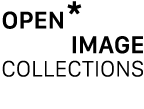Definitions of Key Concepts
Copyright and Fair Use
Copyright can be defined as “the exclusive, legal right to publish, reproduce, and sell a literacy, artistic, dramatic, or musical work. It is actually a primary mean to protect the creator or artist against any unauthorised copying of her works for a reasonable period of time” (Bielstein,2006).
In many countries including Singapore, copyright is limited by the doctrine of fair use. Under Section 107 of the United States copyright law, a list of purposes for which usage or reproduction without permission is considered fair use. They include “criticism, comment, news reporting, teaching, scholarship, and research” (U.S. Copyright Office, 2012). The section also includes four factors to determine if a particular use is fair:
- The purpose and character of the use, including whether such use is of commercial nature or is for non-profit educational purposes
- The nature of the copyrighted work
- The amount and substantiality of the portion used in relation to the copyrighted work as a whole
- The effect of the use upon the potential market for, or value of, the copyrighted work
In Singapore, fair dealing, which is a parallel concept of fair use, is stated to provide exceptions to the Copyright Act. The difference between fair use and fair dealing is that there is an additional factor added to fair dealing in Singapore, which is “the possibility of obtaining the work within a reasonable time at an ordinary commercial price”.The Intellectual Property Office of Singapore (IPOS) also provides details of the exceptions for education in an information sheet titled, “Copyright for educators”.
Digital Image
A digital image is a collection of picture elements (pixels) that converts the original picture into a two dimensional electronic form using binary codes, ones and zeros (Association of Art Museum Directors, 2011; Helms, 1990).
Digital Image Database
A digital image database refers to a compilation of digital images maintained by a museum or its affiliates, of the objects from their collections, primarily to support education, research or interests in the collections. These images should be larger than a thumbnail. The compilation should be freely available to the public through the World Wide Web, and searchable. Each image should also provide physical information that identify the object, such as the title, creator, year of creation, material/medium, techniques, dimensions and reproduction rights. On this site, we use the term “digital collections“.
Open and Openness
The Open Knowledge Foundation (n.d.) succinctly defined open as allowing anyone to “freely access, use, modify, and share for any purpose”. However, ‘open’ may be viewed not only as a “simple binary concept”, but rather, the construct of ‘openness’ as suggested by (Hilton, Wiley, Stein, & Johnson, 2010). Wiley (2010) identified the “4R activities” that are permitted in the context of OER as follows:
- Reuse: The right to reuse the content in its unaltered/verbatim form
- Revise: the right to adapt, adjust, modify, or alter the content itself
- Remix: the right to combine the original or revised content with other content to create something new
- Redistribute: the right to share copies of the original content, the revisions, or the remixes with others
Check out David Wiley explaining the 4Rs and their roles in education below:
Public Domain
Works that are no longer or not protected by copyright are said to be in public domain (Bielstein, 2006). This may be because that the work is not copyrighted in the first place or protection has expired. For example, 70 years after the death of the creator. Creative Commons refer the works in the public domain as Creative Commons Zero (CC0) or where the creator waive all copyright or relating rights associated with their work (Creative Commons, n.d.).
Terms of Use
Also known as terms of service (TOS) or terms and conditions (TOC), terms of Use (TOU)refers to the conditions provided that governs the relationship between the user of the website and its operator (Frieden, 2014).
